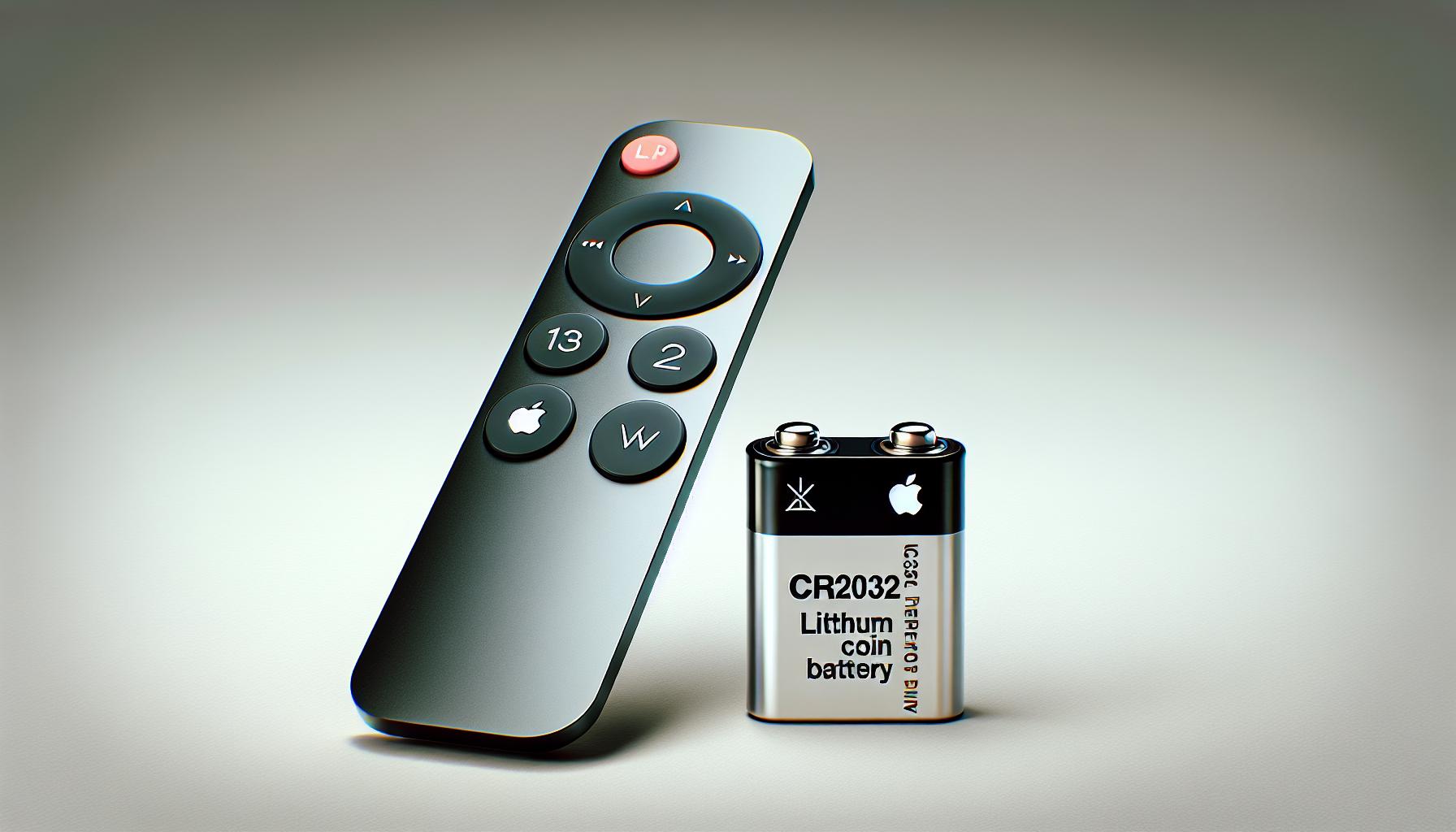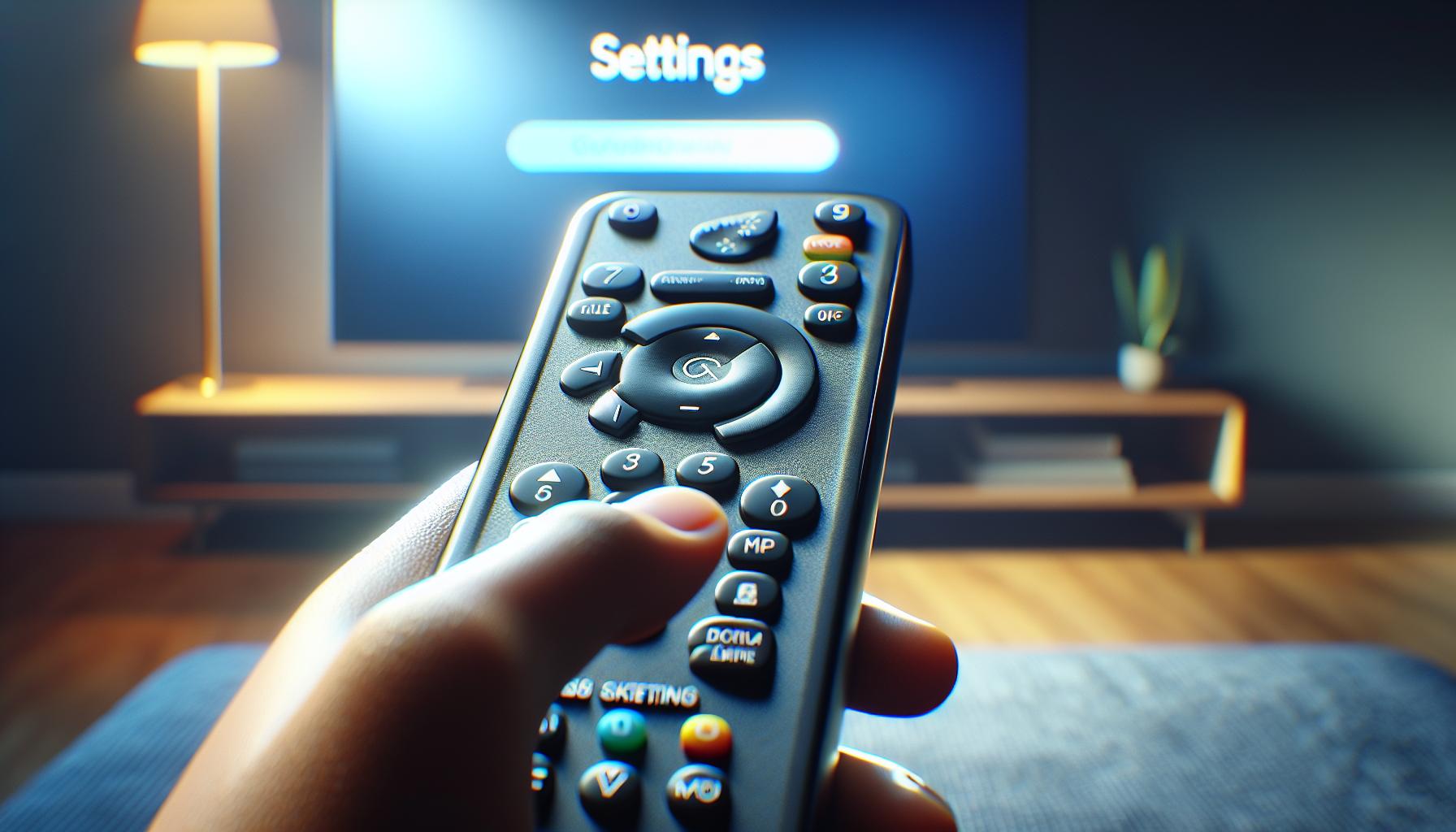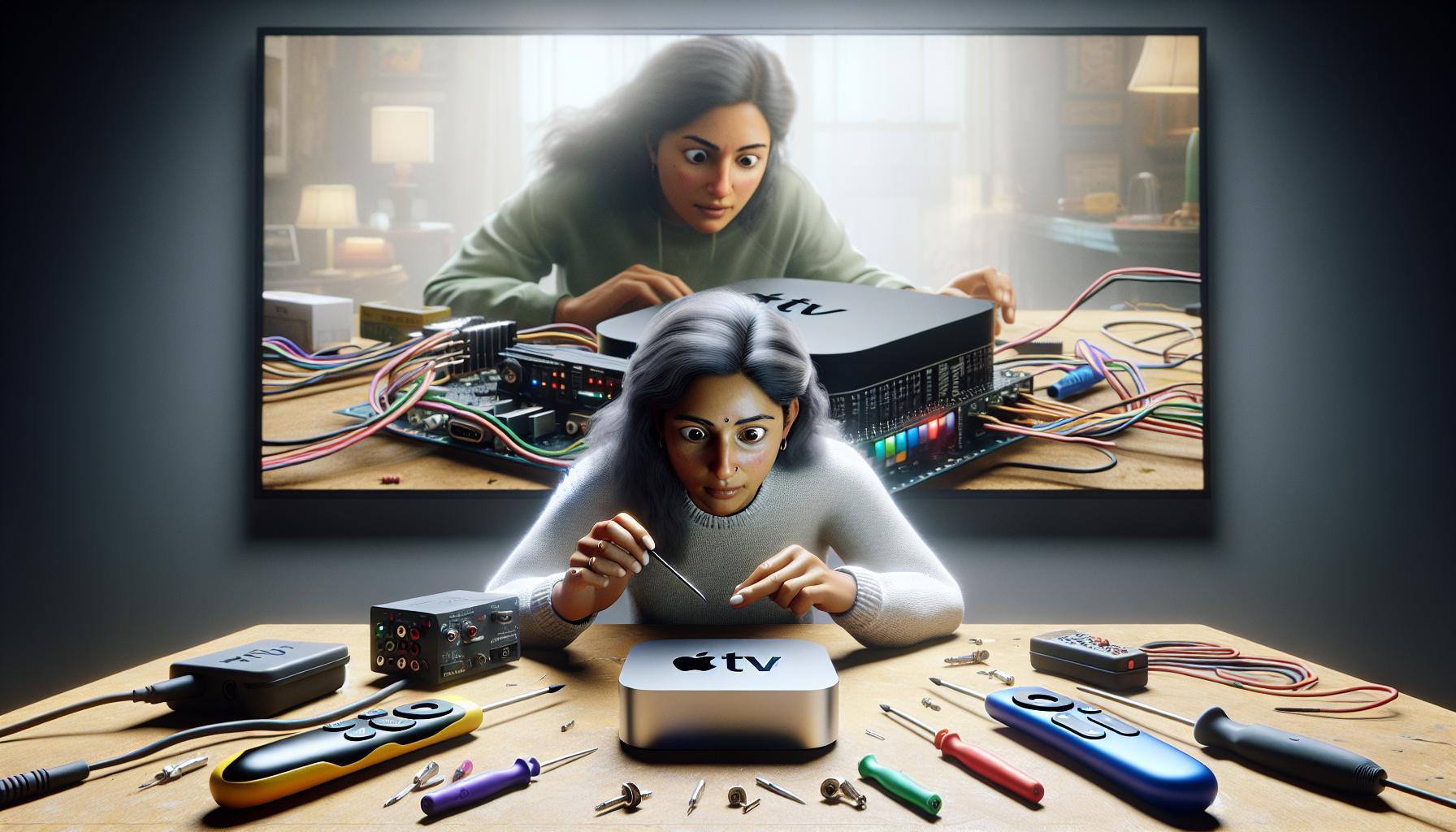Having trouble with your Apple TV remote volume? You're not alone. It's a common issue that many Apple TV users face. But don't worry, we've got your back. In this article, we'll guide you through simple steps to get your Apple TV remote volume working again.
Whether it's a glitch in the system, a battery issue, or something else entirely, we'll help you troubleshoot the problem. We'll provide clear, easy-to-follow instructions that'll have your Apple TV remote volume up and running in no time. So, let's dive right in and solve this issue together.
Common issues with Apple TV remote volume
When you zone into your favorite TV show, it's a hassle if the remote won't cooperate. The volume controls becoming unresponsive on your Apple TV remote is a commonly faced issue. Let's delve into a few reasons why this happens and how easily it can throw a wrench in your entertainment plans.
One prevalent cause is a mere glitch in the system. These digital hiccups can be unpredictable and can happen without warning. One minute you're turning up the volume to catch every word of the dialogue, the next you're stuck at full blast without any way to turn it down. Can be quite the shocker, can't it?
The not-so-glamorous yet common culprit is low battery levels. Many users neglect to check how good their remote's battery health is. Let's face it - between tracking latest series, to keeping up with the news, who has the time to keep track batteries, right? But it's worth noting if your remote has been running on the same set for months, it might be time for a change.
Last but not least, it could be something else entirely, maybe it's a fault with the remote itself. Drops, spills, the bout of rage where you flung it at the wall - any specific incident ringing a bell? While the Apple TV remote is sturdy and designed to withstand daily mishaps, it's not entirely invincible.
Remember, understanding the cause behind your Apple TV remote's unresponsiveness is the first step towards resolving the issue. But don't worry - you're not stuck helpless. The following sections will guide you on how to troubleshoot these matters, so you'll be ready for any curveballs your TV remote might throw your way.
Checking the battery status

First off, your remote's battery status needs a thorough check. You're probably thinking, "Why didn't I consider this simple step before?" But don't beat yourself up! The issue frequently gets overlooked.
Powering your Apple TV remote properly is essential. You might be surprised to learn that even a minimal dip in battery life can cause significant functionality glitches, including volume control issues.
To check your Siri Remote or Apple TV Remote battery level, follow these steps:
- Head to your Apple TV home screen.
- Select 'Settings.'
- Choose 'Remote and Devices.'
- Locate 'Remote' in the 'Battery' section.
Here, you should see your remote's battery percentage, providing a clear idea if replacement batteries are required. If you don't locate the 'Battery' option, that also means it's time to switch out the batteries.
Let's break down the types of batteries used in various Apple TV remotes:
| Apple TV Remote Model | Battery Type |
|---|---|
| 1st and 2nd generation (white or silver) | CR2032 or BR2032 lithium 3V coin |
| 3rd generation (silver) | CR2032 or BR2032 lithium 3V coin |
| Siri Remote or Apple TV Remote (black or white, 4th generation and later) | Built-in rechargeable lithium-ion |
For 1st, 2nd and 3rd generation remotes, replace the old battery with a new lithium 3V coin (CR2032 or BR2032). Check your remote back for specific model numbers.
If you're using a Siri Remote or Apple TV Remote (4th generation and later), the remote has a built-in rechargeable battery, and you might need to recharge it.
It's crucial to ensure your Apple TV remote is adequately powered to prevent unnecessary frustration with volume issues. Keep on exploring other potential causes alongside this as every problem is multi-faced and deserves a comprehensive solution. And remember, the best approach is always thorough, systematic troubleshooting.
Re-pairing the Apple TV remote
If checking the battery status and replacing it (if necessary) doesn't resolve the volume control issues, it's worth trying to re-pair the remote with your Apple TV. Here, we'll walk you through the simple but crucial steps to effectively re-pair the remote.
First, ensure the Apple TV unit is properly turned on. Then, for your Apple TV 4K or Apple TV HD, hold the remote close to the unit and press and hold the Menu and Volume Up buttons together for a few seconds. If it's an Apple TV (3rd generation or earlier), hold the Menu and Left buttons. After holding the buttons, you should see a message on your TV screen indicating that the remote is paired.
It's important to note that if the Apple TV still doesn't respond, the issue might not be with the remote but rather with the TV unit itself.
Sometimes, it may be necessary to manually reset the remote. To do this, hold down the Menu and Volume Up buttons (or the Menu and Left buttons for 3rd generation or earlier) until the status light on the Apple TV blinks rapidly. This means the Apple TV unit and remote control have been unpaired and you can start the pairing process afresh.
Implementing all these steps should restore the volume control functionality of your Apple TV remote. Remember, to mitigate the risk of future issues, always ensure that the remote is sufficiently powered and that the Apple TV unit is functioning as expected.
In rare cases, the problem might persist. This could be attributed to hardware issues with the remote control, or a software glitch in the Apple TV unit. Here, it's advisable to reach out to the Apple Support team for more tailored assistance.
Resetting the Apple TV
In situations where the volume problems continue unabated, troubleshooting the Apple TV itself might be the solution you need. The unit might be experiencing a glitch, and resetting it could clear out the system and solve the volume issue. To initialize this method, follow through the steps below:
- Go to the Apple TV main menu and select Settings.
- Navigate down to the System option. In older models without the system option, you'll select General instead.
- Choose the Reset option. For those with Apple TV 3rd Generation and earlier, you'll select the Restore option to reset.
- Confirm you want to reset your Apple TV.
This process will restore your Apple TV to its factory settings. Keep in mind that this also means any personal settings will be deleted. That's why it's a good idea to try other troubleshooting options first. If this does not solve the volume control problem, it means we are dealing with a more complex issue.
Let's consider the possibility of a hardware issue. Rare as they might be, these are harder to diagnose and might require professional assistance. Before jumping to such a conclusion, check the audio settings on your Apple TV - wrong settings might be at fault. Also, try using a different Apple TV remote or controller. Doing so will further help you determine if the problem is linked with the remote or the device itself. If the issue still occurs with a different remote, you're likely dealing with a hardware-related fault.
In case of any lingering issues, your next move should be contacting Apple Support for some professional assistance. They have highly trained specialists who can evaluate, diagnose, and advise on any problems with your Apple TV or remote. They are the best resource when problems remain unresolved.
Remember, even if the problem leads to a hardware issue, all is not lost. Apple offers excellent customer support, a range of troubleshooting options, and repair or replacement services if necessary. Efforts always pay off eventually, so don’t lose heart.
Updating the Apple TV software

Another useful remedial path for resolving volume control issues with your Apple TV remote is ensuring your software is up-to-date. Apple continually releases software updates with newly refined fixes optimized for enhancing usability and quashing hardware and software glitches. So, if your problem persists even after conducting the previously described troubleshooting activities, then updating your Apple TV software might just be your silver bullet.
Connecting your Apple device to a secure, quick WiFi network is crucial before initializing this process 'How to update your Apple TV software'. And, it's pretty simple:
- From the main Apple TV menu, navigate to the 'Settings' option.
- Find and click 'System', then move on to 'Software Updates'.
- Within the 'Software Updates' section, select 'Update Software'. After a short while, if any update is available, a download prompt will appear.
- Here's where your reliable internet connection comes in handy. Stick to the on-screen directives to download and install the update.
If your Apple TV doesn't download the update, don't fret. You can easily tackle this glitch by rebooting your Apple TV and starting the update process from scratch. To reboot, just select 'System' on your Apple TV, then 'Restart'.
But remember, always let the update installation process finish in entirety before interfering - shutting down, unplugging, or any form of fiddling are a big NO! There's a huge risk of damaging your Apple TV if the power goes out during an update.
Conclusion
So there you have it! You're now equipped with a variety of troubleshooting techniques to fix the volume on your Apple TV remote. Remember, resetting your device should be your last resort. Always check your audio settings, try a different remote, or even consider a software update first. If all else fails, don't hesitate to reach out to Apple Support. They're there to assist you and provide repair or replacement services if needed. Finally, always ensure a strong WiFi connection for software updates and avoid interrupting the process. You don't want to risk damaging your Apple TV. Now, go enjoy your favorite shows and movies with perfect volume control!
What do I do if I have volume control issues with my Apple TV?
You have a few troubleshooting options at your disposal. You can reset the device to factory settings, but remember that you will lose personal preferences. Instead, consider checking the audio settings, using a different remote, or even updating the Apple TV's software.
Do I need internet to update the Apple TV's software?
Yes, you will need a secure and quick WiFi connection to update your Apple TV's software. Navigate to "Settings," then "System," and finally "Software Updates."
What happens if the power goes out during an update?
Interrupting the update process, including power outages, poses the risk of damaging your Apple TV. Thus, ensure that you have a stable power source before initiating an update.
Can Apple provide additional assistance if the issue persists?
Yes, if you're still experiencing volume control issues after trying the recommended troubleshooting methods, you should contact Apple Support. They offer customer support and if necessary, repair or replacement services.




